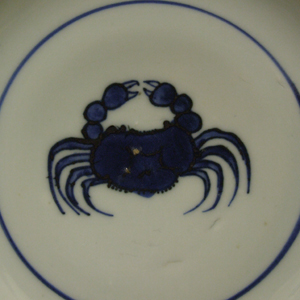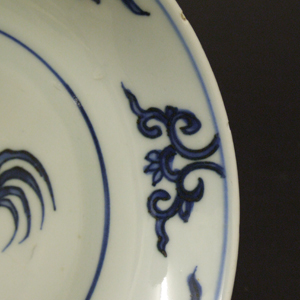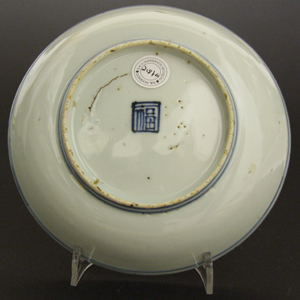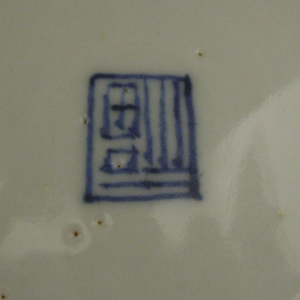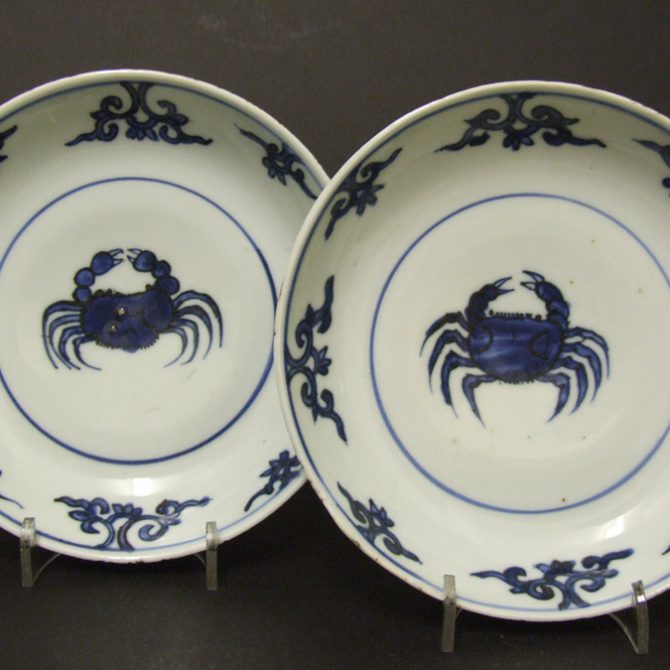
TIANQI 1621 – 1627 Transitional Porcelain
A Pair of Rare Late Ming Blue and White Porcelain Dishes for the Japanese Market, Tianqi Period 1621 – 1627. Decorated in a Strong Cobalt Blue with a Crab. The Bases with a Seal Mark.
SOLD
- Condition
- Very good, the rim has some Mushikui (insect-nibbled) fritting.
- Size
- Diameter : 15 cm (6 inches)
- Provenance
- N/A
- Stock number
- 21876
Information
Ming Porcelain for Japan :
During the late Ming Period the Chinese made a large among of porcelain for the Japanese market, it was made from the Wanli period (1573-1620) and ended in the Chongzhen period (1628-1644), the main period of production being the 1620`2 and 1630`s. The porcelain objects produced were made especially for the Japanese market, both the shapes and the designs were tailored to Japanese taste, the production process too allowed for Japanese aesthetics to be included in the finished object. Its seams firing faults were added, repaired tears in the leather-hard body were too frequent to not, in some cases, be deliberate. These imperfections as well as the fritting Mushikui (insect-nibbled) rims and kiln grit on the footrims all added to the Japanese aesthetic. The shapes created were often expressly made for the Japanese tea ceremony meal, the Kaiseki, small dishes for serving food at the tea ceremony are the most commonly encountered form. Designs, presumably taken from Japanese drawings sent to China, are very varied, often using large amount of the white porcelain contrasting well with the asymmetry of the design.
Crabs / Xie :
Xie, Crabs are normally depicted on Chinese porcelain in the context of other marine crustacea together with aquatic plants. On there own the appear only rarely and as single creatures they have a different meaning. They are used to represent achievement as Xie is a homonym for the those who have passed the first examination towards official rank, Xie. In folklore, the crab can repel bad magic and also restore a man`s potency.
